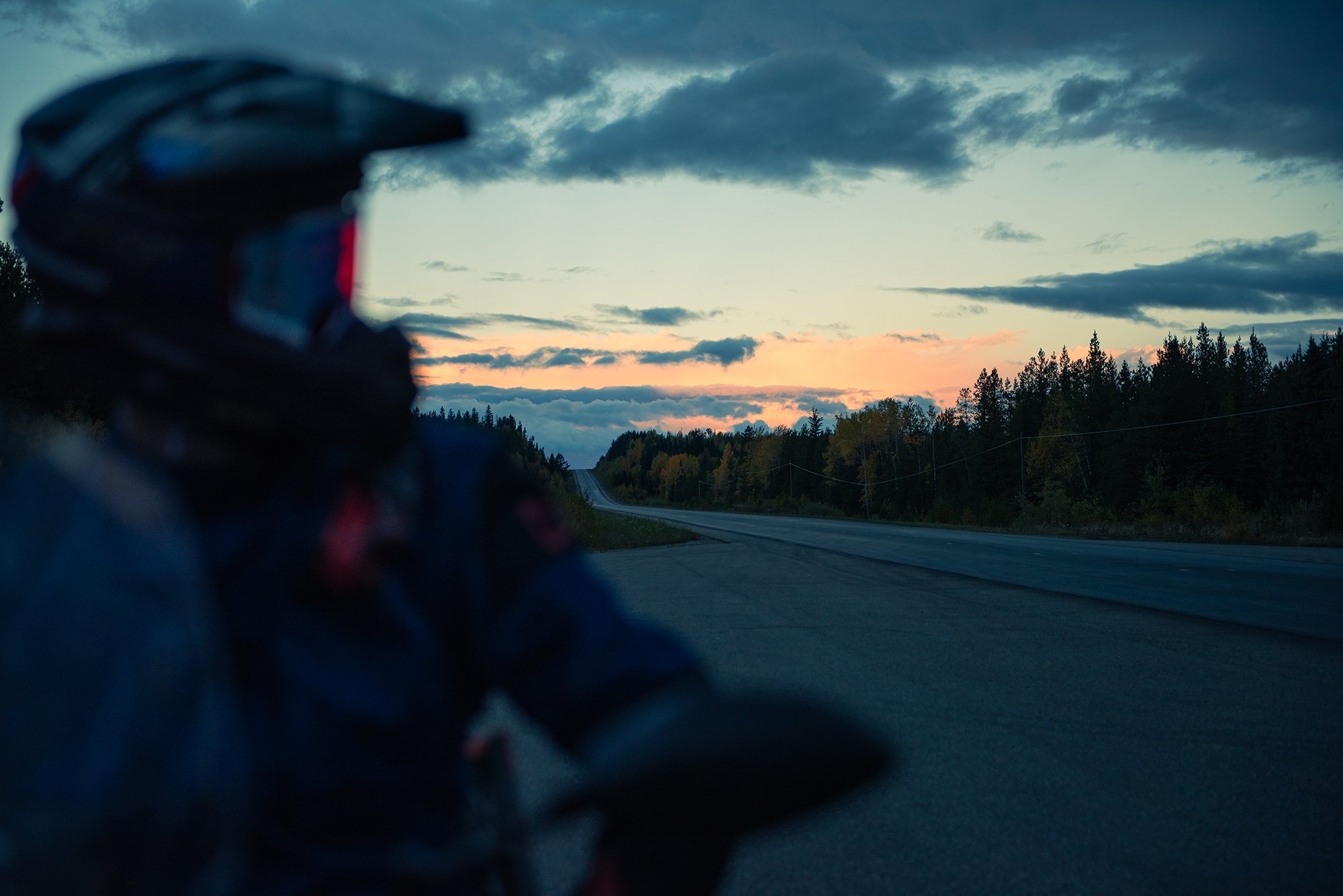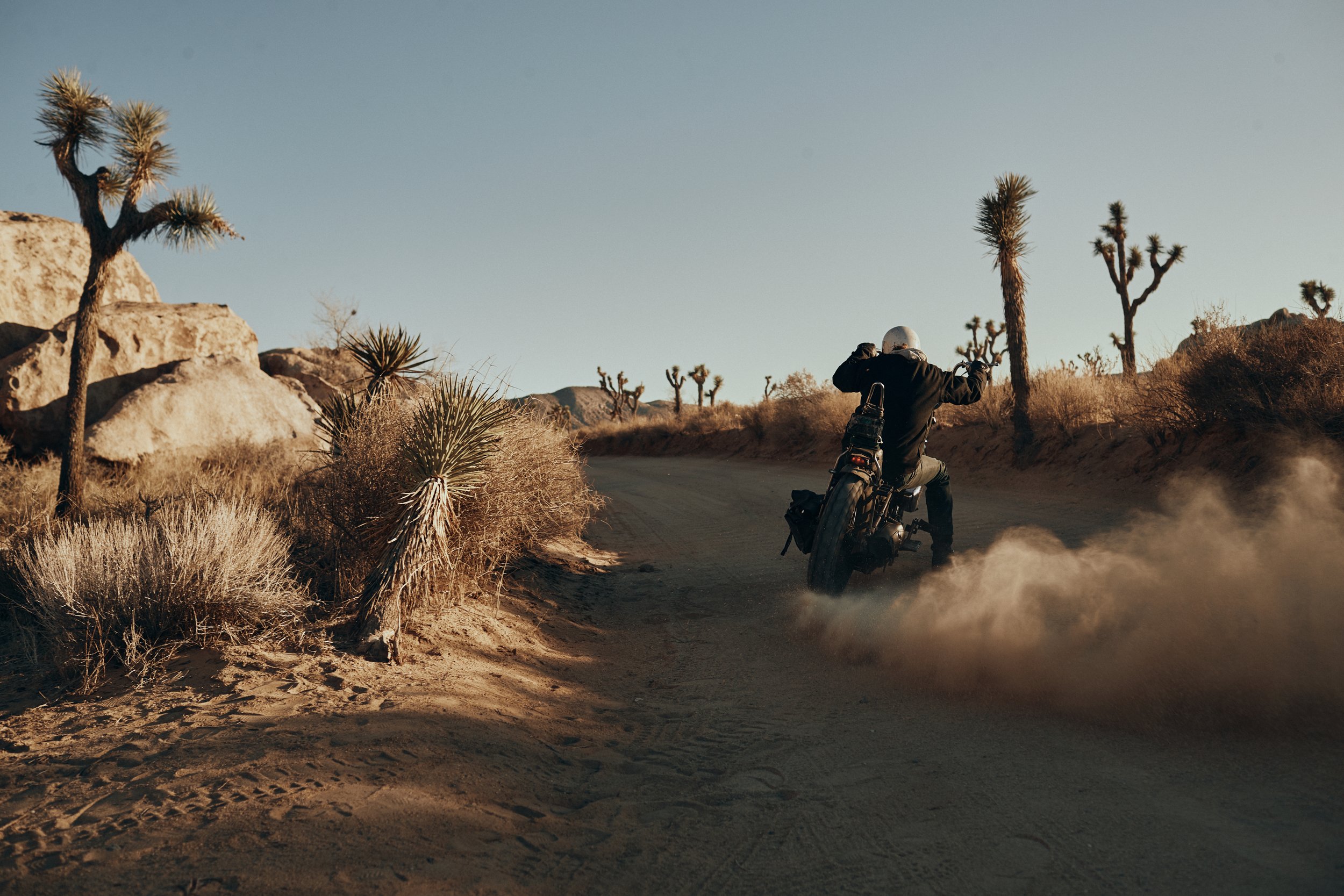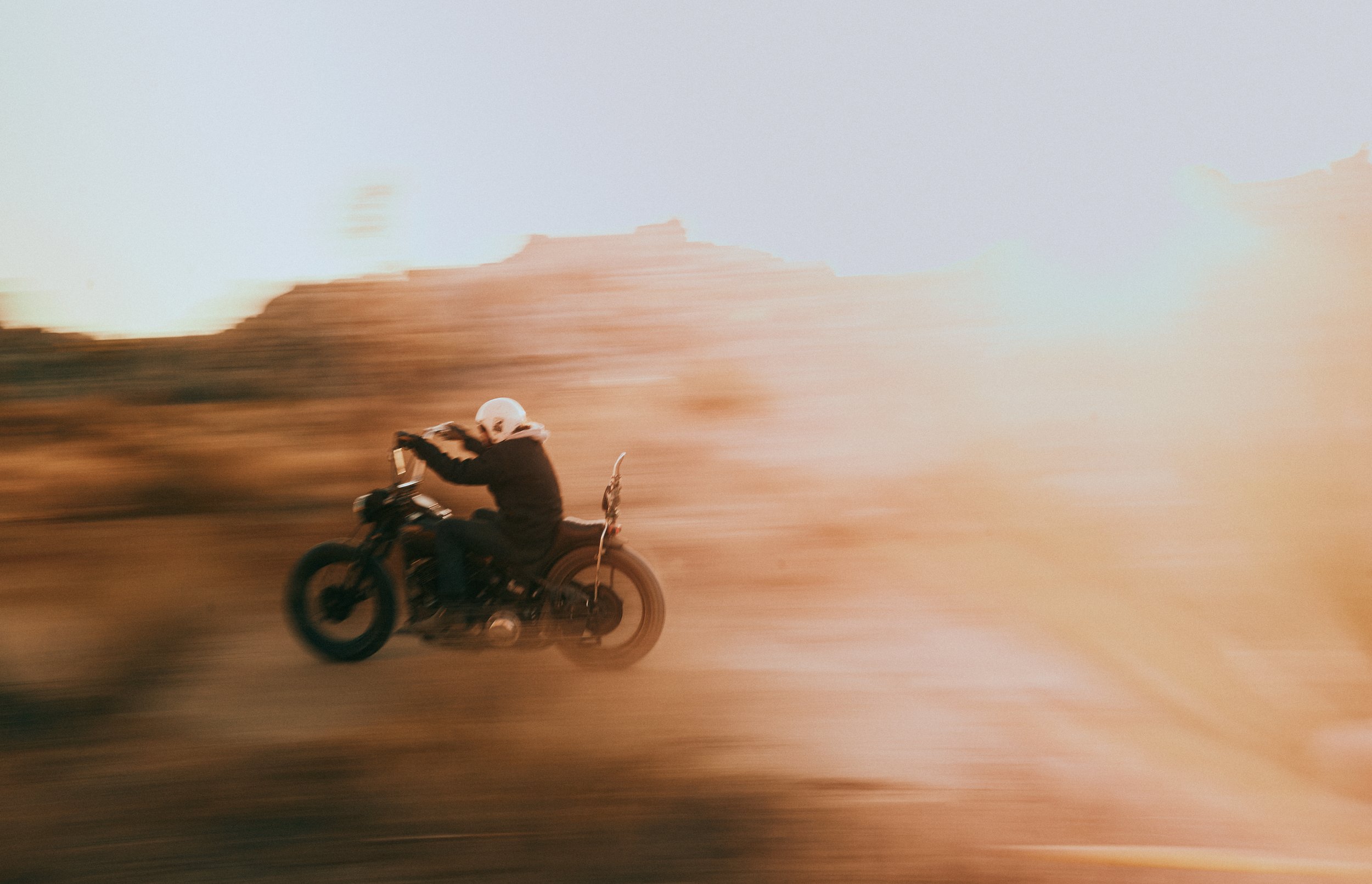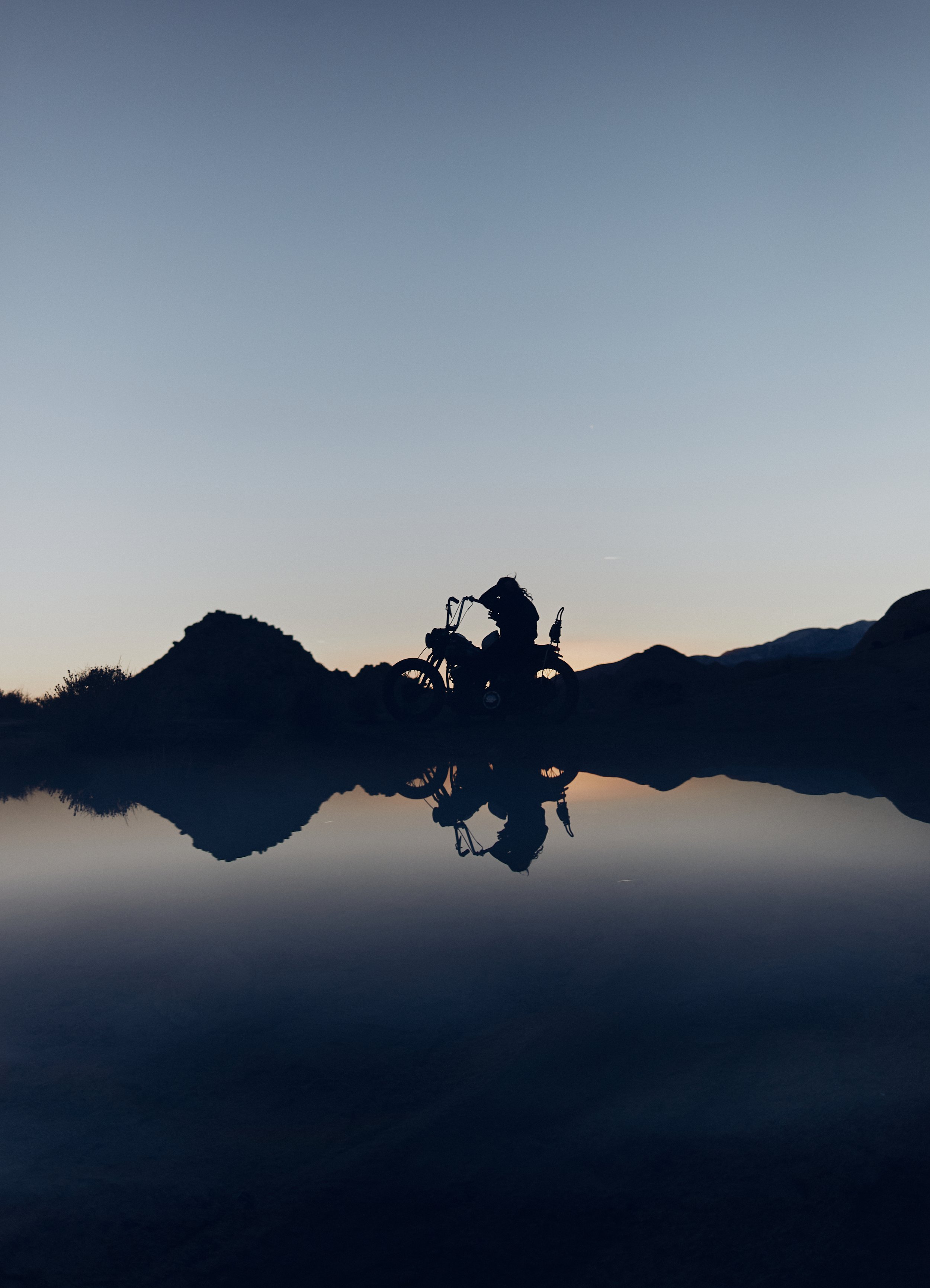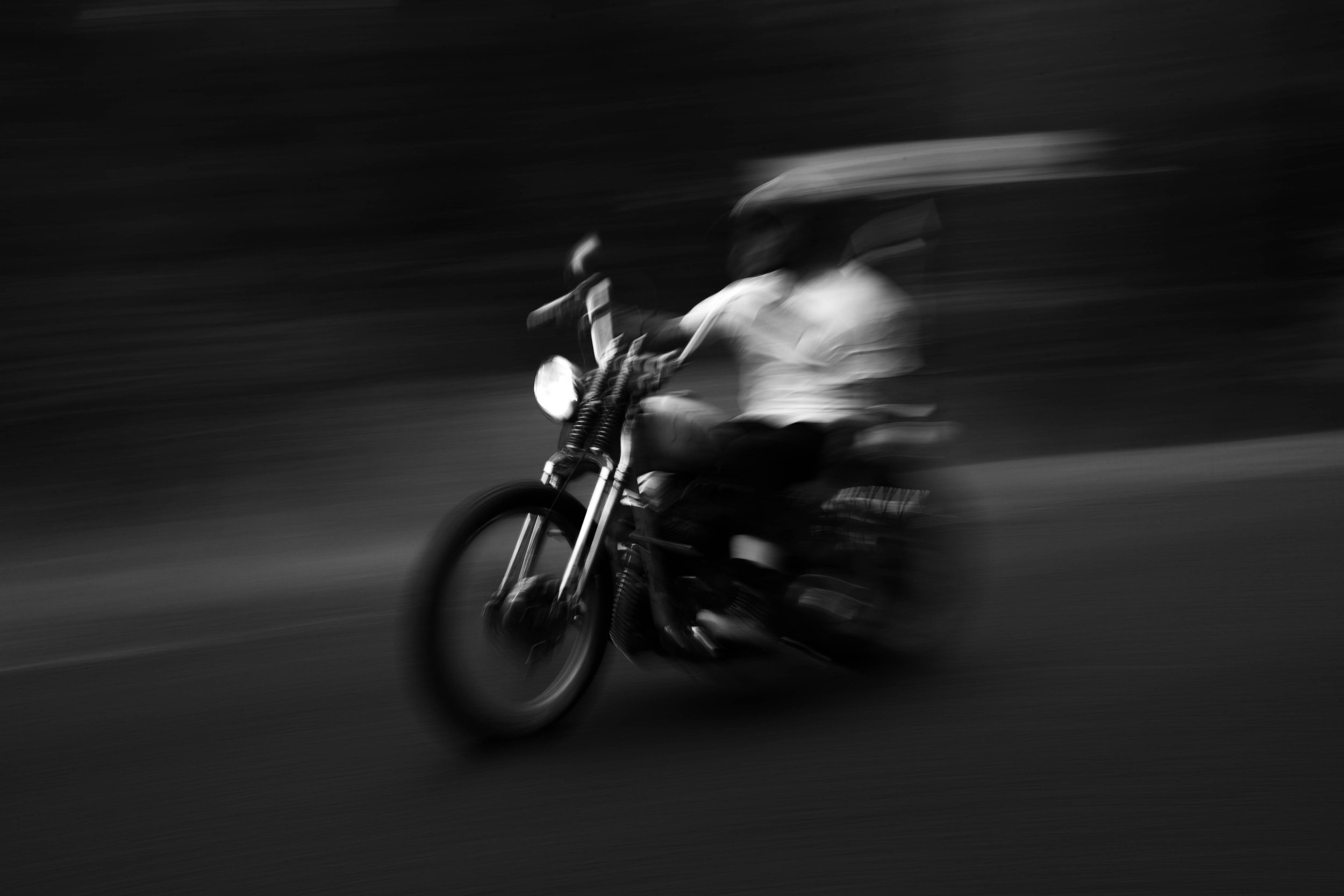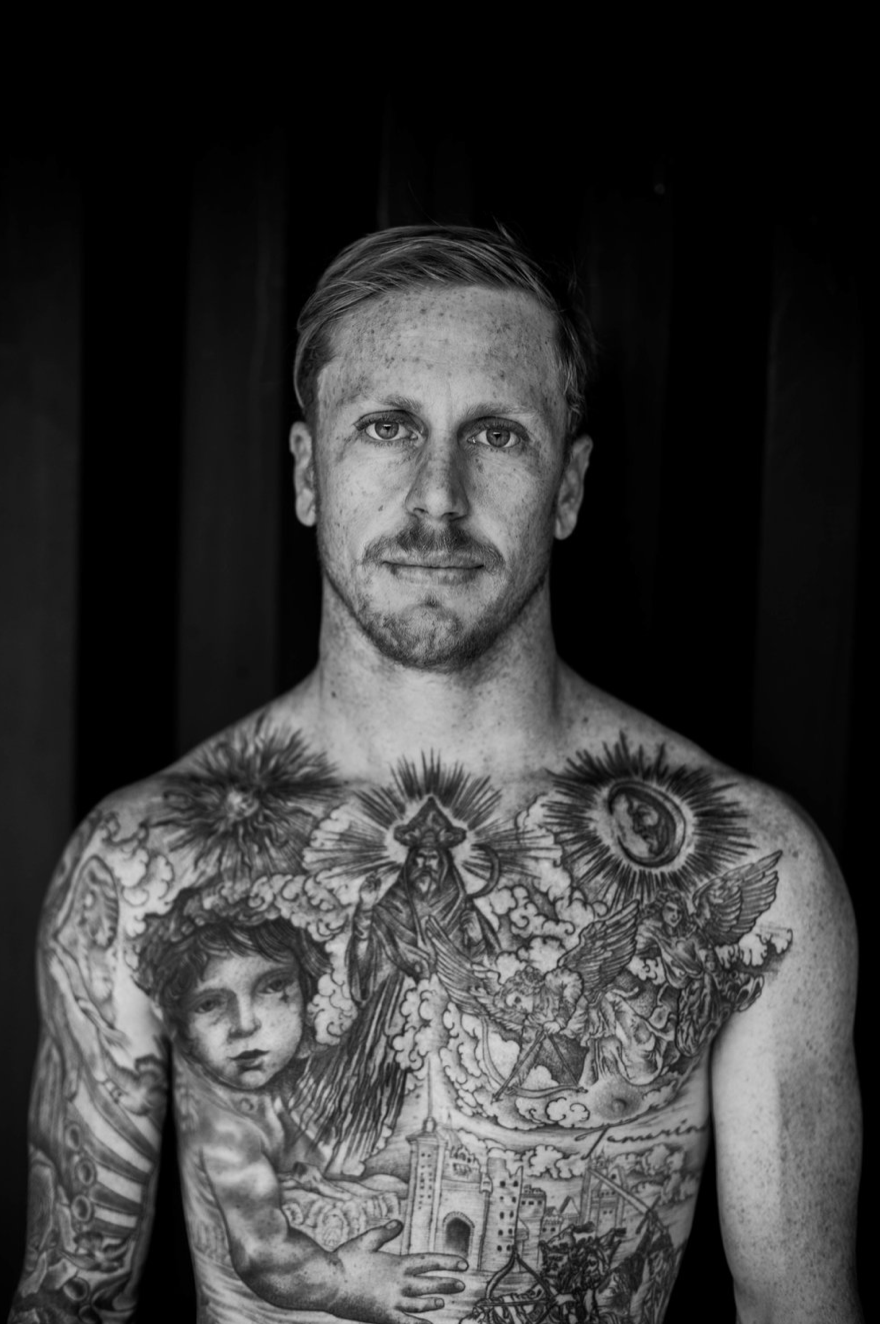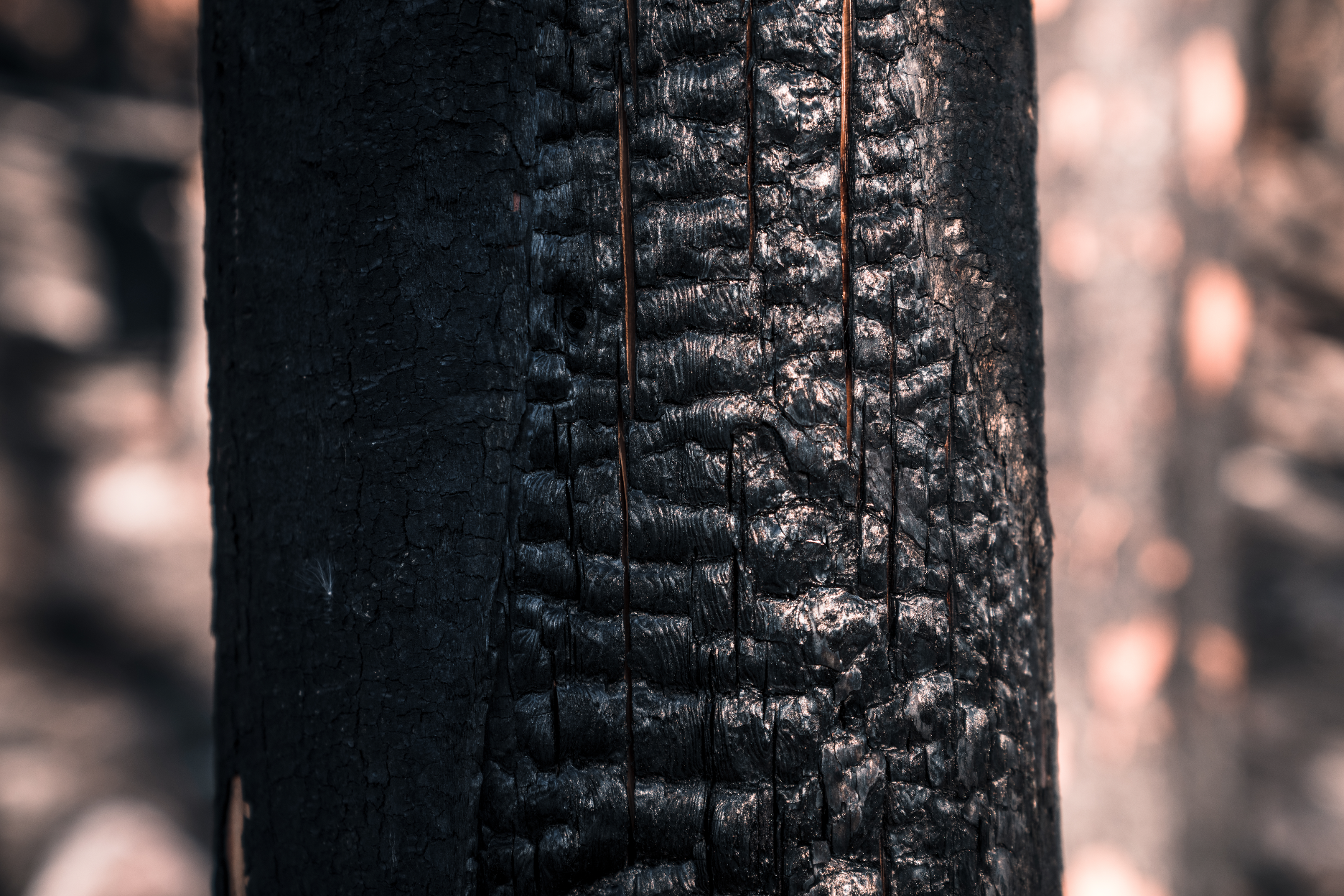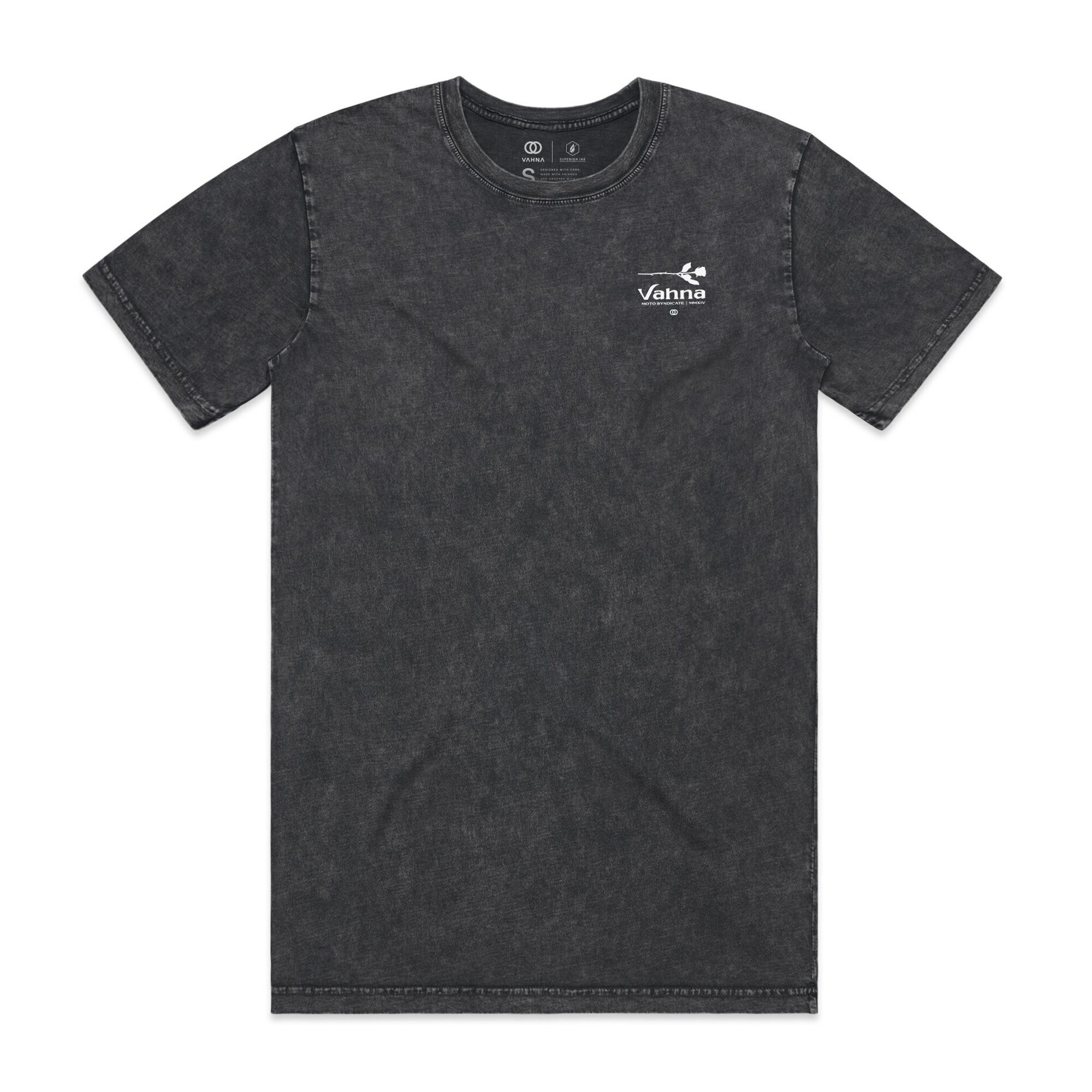A FATHER AND SON’S TWO-WHEELED JOURNEY
Words by Jason Hamborg | Photography by Christos Sagiorgis
A film by 6ix Sigma in association with Tourism Prince George
I could see how a person would make the argument that no sane parent would buy their kid a motorcycle. It’s basically a two-wheeled ticket to the hospital. However, as someone whose parent made that exact mistake, I could argue the opposite. A motorcycle is a gateway, not just to the physical world, but into your psyche. To better understand the limits of yourself and those around you.
Of course, very few of those manic parents bringing home that first bike have any sort of existential motivation. In my case, I’m pretty sure my old man just wanted to give me an opportunity that he never had as a kid. Plus, it was a way to keep me busy, out of my mom’s hair while she did the bookkeeping for the family logging operation.
My dad was always cool like that. I remember my first major riding injury: a broken collarbone after trying to impress some random kids at a sandpit on my PW50. He came home with a SEGA and a fresh copy of “Sonic the Hedgehog” to entertain me while I healed. Similar to his PW purchase, he didn’t know the first thing about video games but knew damn well that he would have loved one at 6 years old.
That 1994 Yamaha PW50 changed everything. My dad tied a rope to the back fender and chased me around the yard as I learned the ins and outs of throttle and brake control. Within a couple of years, he made the mistake of taking me to watch a local race. Up to that point, I had only seen motocross in static images in magazines. Seeing the riders hitting jumps and hearing the sounds of 250 two-strokes racing up and down the hills was all I needed. Kiss your weekends goodbye, Dad, we’re going racing!
It started slow, with local races and the odd overnight trip out of town. But quickly things progressed. Three races a year turned to 5, turned to 10. Soon we were gone nearly every weekend. My brother, my dad and I, the three amigos, would load up on a Friday after school and come home late Sunday night. Like clockwork. My parent’s business, the logging operation, was 4 hours north of my hometown, meaning it wasn’t uncommon for my dad to get back home on Sunday at 10 p.m., drop the trailer and continue north so he could make a meeting with the mill for the next morning. At the end of the week, he would get as much done as he could on a Friday morning before driving back home, hooking up the motorcycle trailer and driving to wherever the next race took us.
As a kid, you don’t really recognize that sacrifice. You’re blind to it, sleeping most of the drive or looking out the window dreaming about the race weekend to come, all the while your parent is burning the candle at both ends. It’s funny, if I would have taken a moment to pay attention to all of this, I could have realized there was more going on than “chasing the dream.” Say whatever you want about my dad, but one thing for certain is that he’s a realist. In his mind, there was no “dream” to chase. He certainly wasn’t blind to the fact his kid was getting 4th place at some rinky-dink motocross race in rural British Columbia.
Looking back at it now, I realize that all those hours, all those arguments and trips to the hospital meant one very important thing. A chance to spend as much time as possible with his kids. A chance to watch them grow up, guide them and, most importantly, make up for the lost time from being gone in the bush for weeks at a time. Was it perfect? Hell no. But it was our way, and in a lot of ways, that’s all you can ask for. The only problem is that until recently, I didn’t really appreciate what it gave me.
I stopped racing in 2008. Real life was starting. I was graduating from high school and working at the local Suzuki dealership, and the prospect of parties and girls was getting more and more attractive. I stopped riding for nearly 6 years, and as much as I hate to say it, that is probably the time that I have the least recollection of spending quality time with my dad.
I graduated from university in 2013 and finally had the itch to ride again. I bought a used bike that needed some maintenance, so I called up my dad and brought the bike up to his place to work on it. Both of us were years out of practice, but we managed to wrestle a fresh tire onto the rim, only pinching one tube, and we sat in his garage sharing a mix of frustration and pride as we stared at the tire. For the first time in a long time, we had an opportunity to spend genuine quality time together. Over the subsequent years, bikes helped us rekindle our relationship. Discussions about rides, maintenance or new motorcycles gave us talking points well beyond basic family conversations.
In 2018, hell froze over, and my dad who was always the observer finally became a bike owner himself. His buddy convinced him that they should do a trip across the Southeastern U.S., and that a Harley Street Glide was a perfect tool for the job. The old man started riding, and riding a lot. He even rode that Street Glide down 200 miles of dirt roads in Baja. I was now the one giving words of encouragement. Taking time out of my days to talk about the latest trip or offer advice on parts for his bike. That’s when it all clicked. Nearly a decade removed from our racing days, I realized that the roles had reversed. Bikes would now become my way of spending time with my dad, cultivating our relationship and ensuring we had more to talk about than the weather and politics.
In the summer of 2021, I began planning a ride from my hometown, Prince George, British Columbia, heading east into the Robson Valley at the edge of the Rocky Mountains. The ride would feature a small portion of Highway 16, and a motorcycle route called Route 16: a stretch of highway totaling 600 miles from Valemount to Prince Rupert, BC. I have driven the highway multiple times over the last several years, but this was going to be my first time experiencing the journey by motorcycle. But I needed a partner to make this trip truly enjoyable, and after several foiled attempts to organize a trip with my old man, our schedules aligned, and he was going to be able to join me on the journey.
We set out from Prince George early in the morning, and I realized quickly that this was our first true “trip” on bikes together with a mission and some actual ground to cover. We found our groove naturally, with my dad leading, and me chasing just behind. The highway immediately leaving Prince George is straight and open, with lots of room to daydream. But slowly the topography changes, as the once-distant mountains begin to dominate the sky. Eventually, we were engulfed by stands of cedar as the highway carved a path through the mountains, running parallel with the mighty Fraser River. The first stop on our journey was the Ancient Forest/Chun T’oh Wudujut Park, part of the world’s only temperate inland rainforest. Walking through the forest and being dwarfed by the ancient trees, it’s easy to forget the pressures of the outside world. The feeling of being completely present in the moment. The same feeling Dad and I had hanging out in those dusty racetrack parking lots growing up.
We continued east along the highway, carving through the terrain like the river beside us until we turned north, off the beaten path to explore a “shortcut” along the south side of the Fraser. This was my first time seeing my dad ride on the dirt since he had crashed my brother’s bike in 2006 and given himself a goggle-shaped bruise across his forehead. Fortunately, we transitioned from the asphalt with no issues, and like a proud parent, I smiled under my helmet as we pushed our way through mud and sand, slowly climbing up from the valley and farther into the mountains.
Day two was reserved for exploration within the Robson Valley. We had lofty ambitions in the morning to set our sights on Mount Robson, but with the weather we were struggling to see through the fog past our handlebars, let alone see the top of the Canadian Rockies’ tallest peak. So, we made our way back into Valemount to explore the many forest access roads, climbing out of the valley and into the alpine. Valemount sits at the foothills of the Cariboo, Columbia and Rocky Mountains and makes for an ADV rider’s dream.
By midday, my dad was sick of his traction control and was determined to find a way to shut it off so he could “do some burnouts.” Just like the days when my dad found the blind confidence to coach me through hitting a new jump at the track as a kid, I was now blindly coaching him through a KTM menu screen I had never seen before. It’s funny to travel hundreds of miles just to compare each other’s ability to spin the tire around a corner.
Pulling up to our final destination on the shoreline at the northern tip of Kinbasket Lake, I paused with reservations about my dad riding in this deep sand. But without hesitation, he clanked passed me on the big 1290, and we had come full circle as I watched my dad push his way up the shore, confidently displaying all the skills he spent years ragging me about. Feet on the pegs, looking ahead and standing up. In that moment I couldn’t have been prouder. That’s when it hit me: the sleepless nights, the hospital visits, the broken bikes and bones. It was all just leading up to the time when we could switch roles and have an opportunity to share a moment like this.
